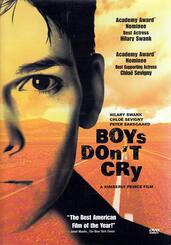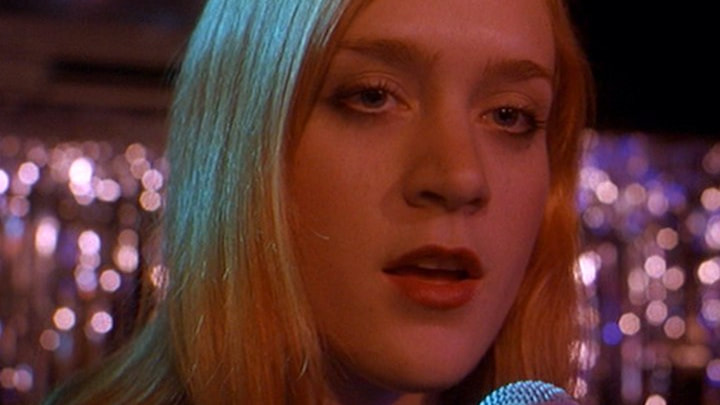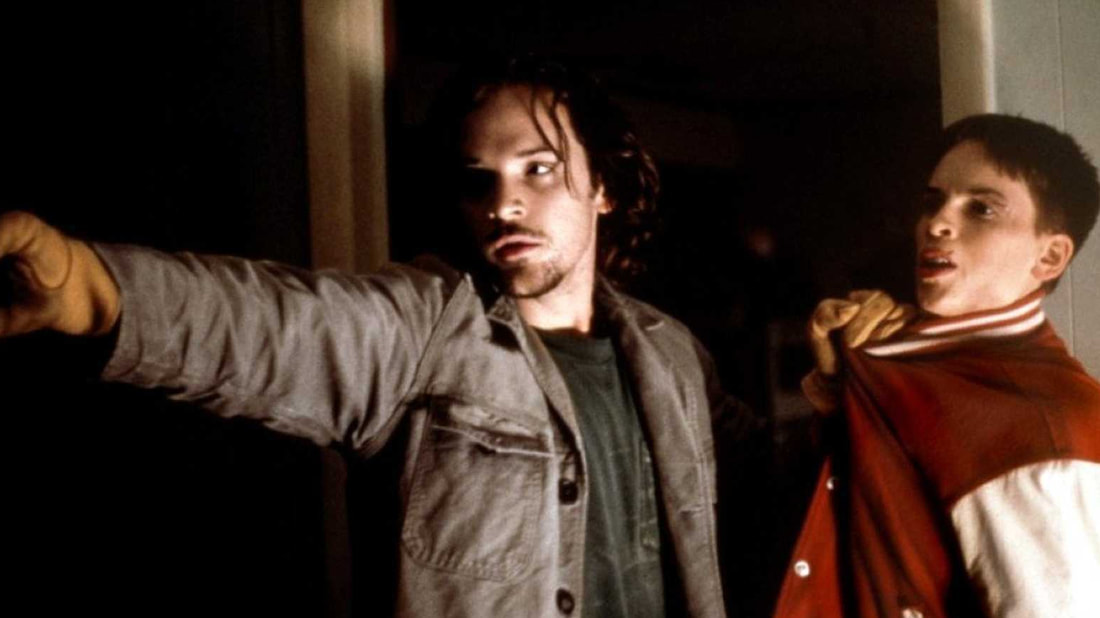“Boys Don’t Cry” (1999) is twenty years old but could have been made just this year. That’s a testament to the quality of the direction and filmmaking but is also a shameful indictment of hatred that still remains today. Brandon’s gender identity, and his experience of it is treated with both joy and anguish. He is joyful when his gender is confirmed by the smallest affirmation, and he revels in traditional masculine behaviour. But his anguish comes in trying not to be exposed and having to hide his body and his periods. From the outset, his position is made clear. When asked “Why don’t you just admit that you’re a dyke” Brendan replies “Because I’m not a dyke.” In these five words, Brendan is saying that he is not a lesbian woman but a straight transgender man. It explains that gender identity and sexual orientation are different and separate things. Shortly after this exchange, he rails at the barriers he faces in receiving gender-affirming treatment. He can’t afford hormones and doesn’t want to have to see psychologists. What this succinctly shows us is that a transgender person is still valid even without hormones or surgery. Identity exists outside of medical intervention. Twenty years later and progress has been certainly been made, but transgender people still face these same difficulties. There is a possibility that these lengthy, costly and emotionally traumatic barriers could be removed in the UK by reforming the Gender Recognition Act. But at the time of writing this still hasn’t been formalized. As Brandon’s identity is exposed later in the film he becomes dehumanized by people who previously loved him and provided safety. He’s referred to as “it” and is asked, “what the fuck are you”. He is also dead-named (using a transgender person’s previous name is very harmful) and called a liar. Although Brandon did lie about his past his gender identity is not a lie. This change in language shows linguistic tools that have been used for centuries and we still have not escaped today. People who don’t understand others will dehumanize them through language. And that language supports an escalation towards violence. In probably the most-hard hitting scene Brandon is assaulted and raped by two of his friends. This hate crime is seen by some as a homophobic so-called ‘corrective rape’ as well as an act of perceived revenge or an assertion of power. ‘Corrective rape’ is a type of hate crime where the perpetrators believe a woman needs to have sex with a man in order to be turned straight, and this is forced upon her. It’s an incredibly difficult scene to watch because of the content, but also in the way it is shot with Brandon’s experience at the centre. It is incredibly raw and painful. There is nothing sexually explicit actually shown on screen but close-ups show Brandon’s face distorted in pain. It’s not at all sexualized because rape isn’t about sex, it’s about power. Sometimes it takes a female director to show rape and sexual assault in its true traumatic brutality. We’re used to sexual assaults in film being used as a plot device to spur on men’s actions. As a comparison, John Hillcoat’s “Lawless” (2012) hints at Maggie’s (Jessica Chastain) rape through a brief soft-focus shot of her bruises. And later Forrest (Tom Hardy) comes to realize what happened to her and it spurs him into the final showdown of revenge while Maggie stays at home. In “Lawless” we are shown nothing about the impact the assault had on Maggie. It doesn’t matter. When the assault is revealed she is shown in a flimsy nightdress. She doesn’t cover her shoulders with the silk dressing gown she is wearing even though she is clearly nervous and afraid. Even when discussing something so horrific she is sexualized and made vulnerable. In “Boys Don’t Cry” Brandon is interviewed by the police afterward his assault and is subjected to further trauma. Where the opening scenes show him reveling in his identity and joyful in masculine behaviours, his identity is now fully exposed and questioned, and he’s forced to try to explain to a stranger something he doesn’t even understand himself and is irrelevant to the assault. Lines in this scene are taken directly from the real Brandon Teena’s taped police interview.
The comparison to “Lawless” here is stark. After the event Brandon is traumatized, dirty, cross-examined because Brandon as the victim is at the centre. But in “Lawless” Maggie is sexualized and practically unscathed – because her character doesn’t actually matter apart from to further a man’s actions. In the years since “Boys Don’t Cry” was first released public discourse around transgender rights has become more heated and the landscape around progressive issues more divided. If this film were to be released now it would likely be met with backlash around a mythical ‘trans agenda’ or ‘social justice warriors’. But what Peirce has shown with “Boys Don’t Cry” is that the transgender experience is not just a new fad. Transgender people have always been a part of society in all circles, classes, and races. The hatred they experience is very sadly as real today as it was twenty years ago. Comments are closed.
|
AuthorHi, I'm Caz. I live in Edinburgh and I watch a lot of films. My reviews focus mainly on women in film - female directors or how women are represented on screen. Archives
December 2021
Categories
All
|






 RSS Feed
RSS Feed
